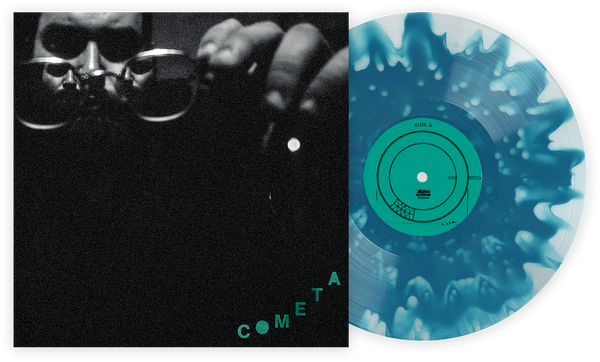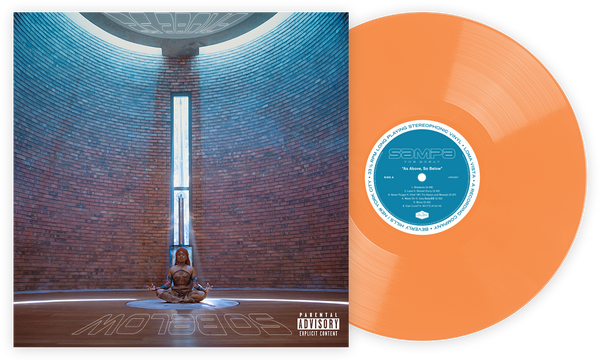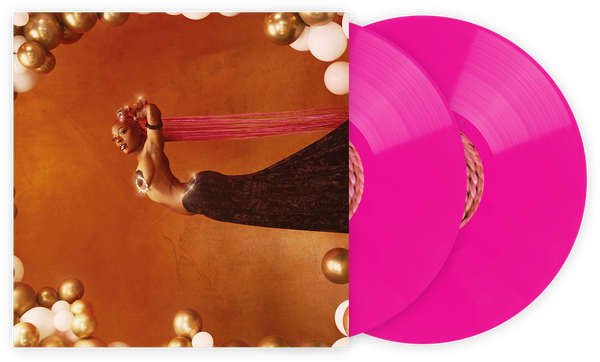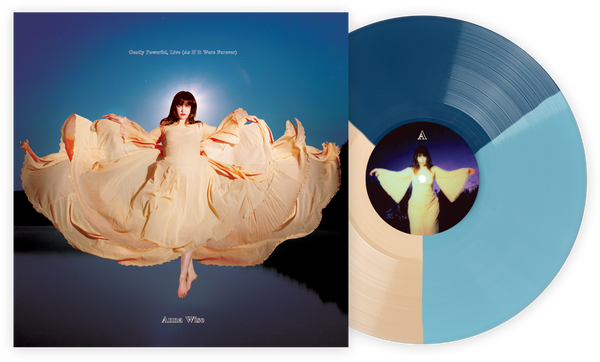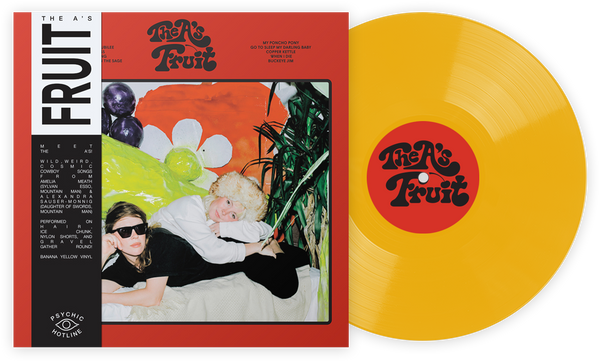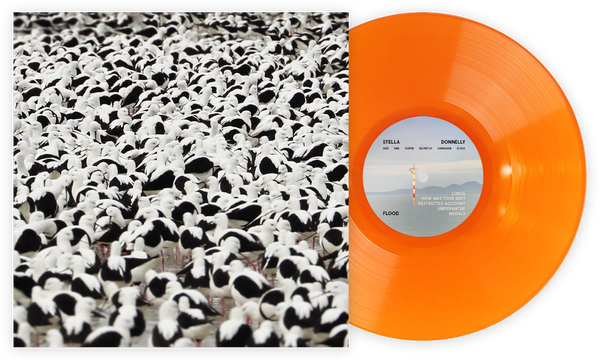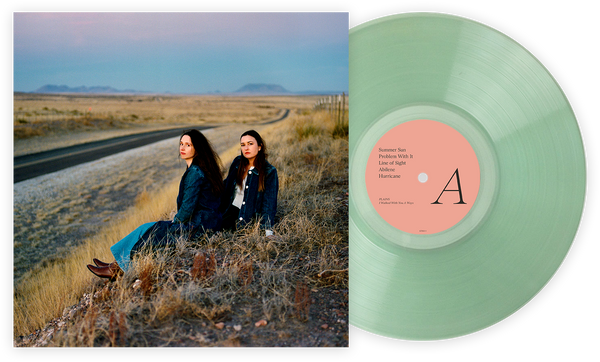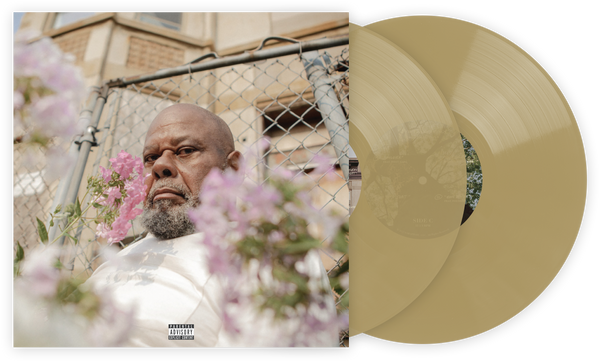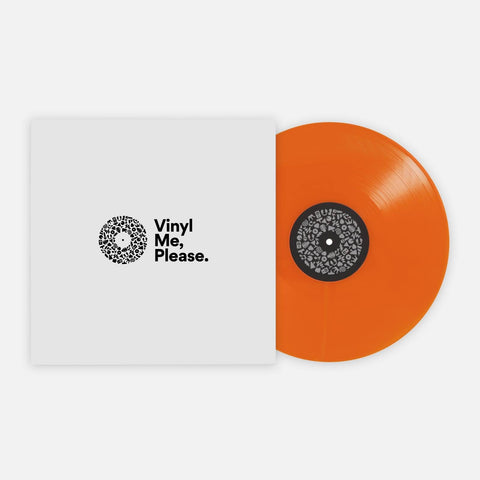With all their success, it’s still difficult to describe the Cure to the uninitiated. To say ‘goth rock’ is just lazy and wrong. That won’t explain why fans range between moody teenagers, art-school graduates, and middle-aged yuppies, and it won’t explain songs like “The Love Cats.” Like a chameleon, bandleader and founder Robert Smith has taken the band from its post-punk minimalist beginnings to drug-fueled sturm and drang, eccentric synth-filled detours, psychedelic spirals, and dizzying dream pop. Then the band does it again for good measure. They’re rock, goth, punk, pop, and psychedelic disco with a fluid lineup that drops to one or balloons to six. The one constant is the only original member currently in the band: Robert Smith himself. Poet, cartoon, artist, and guitar hero, he’s the French-poetry-reading offspring of Nick Drake, Jimi Hendrix, and Pink Floyd in lipstick.
Dabbling in various bands as a teenager, Smith formed Easy Cure in 1977 in Crawley, England which later changed to the Cure and the lineup was pared down to a three-piece with Smith on guitar, Michael Dempsey on bass, and Lol Tolhurst on drums. Their debut, Three Imaginary Boys (1979) is an uneven affair but there are some gems, just as there are on the next twelve studio albums and the many compilations and live albums. And these gems aren’t necessarily the singles. The non-single album cuts are some of their most defining songs and get the loudest cheers when played at shows. You need to sit down and listen to whole albums to understand that. From claustrophobic nightmares to sweeping dreamscapes, there’s a little something for everyone. A die-hard Cure fan will say you need to own them all but here are 10 albums you really should spend time with.

Faith
Faith (1981) is the Cure's third studio album and is perfect for gazing out windows at decomposing leaves and dead-looking trees. A three-piece with Simon Gallup on bass, the band’s increasing use of drugs and alcohol prolonged the recording sessions on songs where Smith confronted ideas of faith and spirituality. Musically the album is layered and atmospheric, even on the more uptempo numbers like single “Primary” where the dueling basses by Smith and Gallup are frenetic and mesmerizing. Lyrically bleak and emotional, Smith laments that he “cannot hold what you devour” (“The Holy Hour”), recognizes that the “older we grow, the more we know, the less we show” (“Primary”), and threads a common theme of losing innocent belief in things as childhood ends. The funereal tones are obvious (“All Cats Are Grey” and “Funeral Party”) but the heart of the album is the closing title track where Smith’s claims of having nothing left but faith after everything is dead and gone are either hopeful or bitter, depending on the mood.

Pornography
As much as Smith would later protest the gothic rock label often slapped on the Cure, there is no denying it at the time of 1982’s Pornography. A disturbing album title, big teased out hair, lipstick and black eyeliner, black clothes and lyrics like “It doesn’t matter if we all die,” the band’s fourth album is as goth as it gets. With the same line-up as on Faith (though Gallup would depart after the tour for this one) Smith and company plunge into the nihilistic abyss about the futility of life (“One Hundred Years”) and meaningless sex as a death-march (“Siamese Twins”) and that’s just the first side. “The Figurehead” opens side two and the self-loathing is both startling and familiar to anyone who realized they were a shitty person. The melodic “A Strange Day” is almost out of place except for the relentless drumming. The claustrophobia closes in on “Cold” and the closing title track, which is a mix of distorted TV samples, sinister synths, and Smith’s lyrics descending into a mental breakdown. Turn off the lights and turn up the volume for this one.

The Head on the Door
Smith emerged from the psychedelic dirge of The Top, ended his stint as guitarist for Siouxsie & The Banshees, and sought renewal and lightheartedness. Guitarist Pearl Thompson (known then as Porl, who had been part of Easy Cure) and bassist Gallup officially rejoined, drummer Boris Williams was added, and Tolhurst moved to keyboards. The fleshed-out band inspired Smith to embrace the acoustic guitar and explore new sounds and styles. Pop songs and quirky music videos, The Head on the Door (1985) remains the perfect entry-point for Cure newbies. The album title is a line from groovy single “Close to Me” taken from a nightmare of Smith’s about a disembodied head. So even though what we have here is a pop record, it’s a Cure pop record which pairs soaring synths with lyrics asking a betrayed lover to come back (“In Between Days”), being paralyzed by blood while backed up by castanets and flamenco-style guitar (“The Blood”), and drowning in numbness (“Sinking”). We also get our first all-out anthem with “Push” with its 2.5 min guitar intro and driving bass line which continues to be a live-show favorite. The Head on the Door blurred the lines of radio-friendly and darker alternative music.

Standing on a Beach: The Singles
Yes, this is a singles compilation. But it’s a really great one. Capitalizing on the success of The Head on the Door, Standing on a Beach (1986) was released to familiarize listeners with the band’s earlier catalogue. The vinyl version includes early singles like “Boys Don’t Cry” as well as several fantastic non-album singles like dance-number “The Walk,” quirky “The Love Cats,” “Let’s Go To Bed,” and the spooky-inspired-by-a-children’s-novel “Charlotte Sometimes” which alone makes getting this comp a necessity. And since this 10 best list leaves out a few early albums, you’ll still want songs like ethereal “The Caterpillar” and the perfect “A Forest.” Like any great retrospective worth its salt, not only is this album a great intro to their post-punk beginnings and progression to alternative-radio staples, it also proves the Cure didn’t just decide to jump into pop songs with “In Between Days” but that they’ve been doing it since the beginning.

Kiss Me Kiss Me Kiss Me
For anyone who doesn’t regard Robert Smith as a full-on guitar hero, listen to the opening track “The Kiss.” For over a minute the guitar screeches and careens as the ominous keys and drums build to a forceful climax where Smith spits and wails out his disdainful lyrics. It’s a reminder that despite what the listener has heard from radio-friendly singles like “Just Like Heaven” and “Why Can’t I Be You?” the double-LP Kiss Me Kiss Me Kiss Me (1987) is an eclectic mix of pop and dirge. Multiple personalities are on display: pop star (the aforementioned singles as well as “Hot Hot Hot!!!”), psychedelic-goth hero (“Torture,” “If Only Tonight We Could Sleep,” and “The Snake Pit”), wounded romantic (“Catch,” “One More Time,” “How Beautiful You Are,” and “A Thousand Hours”), and reluctant mentor to Cure devotees everywhere on the album closer “Fight” where he urges listeners that “when the hurting starts and when the nightmares begin/remember you can fill up the sky, you don’t have to give in.” The Head on the Door laid the groundwork but Kiss Me was the payoff, an international success that thrust the band into the mainstream.

Disintegration
Disintegration’s lush perfection means it can soundtrack a night of wallowing alone in heartbreak or a tender evening of breathless groping and smeared lipstick. After the success of Kiss Me, the band (with Roger O’Donnell on keys) was at a creative peak but Smith’s depressive tendencies, his increasing disillusionment with what pop success meant for the band, and the urging of bandmates to fire Smith’s boyhood friend Tolhurst (whose addictions prevented any meaningful contribution) inspired a return to darker themes of love and loss. Despite the uneasy reception by the label who was expecting pop songs in the vein of Kiss Me, 1989’s Disintegration became their most successful album. Singles “Pictures of You,” “Lullaby,” and “Lovesong” (written for Smith’s wife) got extensive radio play. Layers of shimmery guitars and synths, a proclivity for long instrumental intros, an album opener which defines everything an album opener should be (“Plainsong”), a cutting title track, love, anger and self-hate, who would’ve thought an album about falling apart would take the band to rock-stadium stardom?

Wish
1992’s Wish is dream pop excellence and anyone who says otherwise missed the point. Sure it wasn’t a front-to-back fall into the swamps of sadness like die-hards wanted but in many ways Wish is the more-lyrically-mature cousin to Disintegration. Still a five-piece with Perry Bamonte added to replace O’Donnell on keys, the album repeats the overall theme of endings and love-gone-wrong but instead of self-absorbed introspection it tackles tender nostalgia and an it’s-better-this-way melancholia. Endless love is declared (“High”) only to be overcome by emotional distance in “Apart.” “From the Edge of the Deep Green Sea” is a furious tangle of guitars and hearts in a story of a couple not meant to be but the narrator is unable to let go (be prepared for a face-melting Smith guitar solo). We ride the love rollercoaster on the flawless “Friday I’m In Love,” but there are trust issues and he just can’t pretend anymore (“Trust” and “A Letter to Elise”). “Cut” rocks out with despair and venom but things slow down on the lovely “To Wish Impossible Things” which aches with regret. Finally, we’re told to “please stop loving me/I am none of these things” on album closer “End” which had listeners wondering if he was talking to a lover or to fans. The worry over the band breaking up was only compounded by the departures of Williams and Thompson after the tour was over.

Paris
I know, I know, why am I making you lust after a double album that goes for hundreds of dollars on Discogs? The short answer: it’s their best live album. Plus you haven’t lived until you’ve heard a live Cure show. If you want to hear early Cure, go for Concert; if you want to hear them play the hits, go get Show. But if you want to hear a band in their five-piece lineup performing tracks that best define what the Cure means to its die-hard fans, get Paris (1993). Recorded in Oct 1992 in Paris during their Wish tour it includes the majestically dark “The Figurehead” and “One Hundred Years” off Pornography and the ominous “At Night” “In Your House,” and “Play for Today” off Seventeen Seconds. The album works as moody atmosphere, providing a lushness to the earlier tracks that doesn’t exist on the studio versions. The adoring cheers never stop and the band is a well-rehearsed unit, with Smith playful on “Catch,” “Dressing Up,” and “Close to Me,” and satisfyingly tragic on “Apart,” “Lovesong,” “A Letter to Elise,” and “Charlotte Sometimes.” The maudlin lyrics never dim the joyful mood of everyone listening to one of the best rock bands ever.

Bloodflowers
Hailed as a return to form after the uneven Wild Mood Swings (1996) (which saw the return of O’Donnell and addition of drummer Jason Cooper), Bloodflowers (2000) was promoted as being in the same vein as Pornography and Disintegration (part of a trilogy). There were no commercially-released singles and no overt pop. Most songs are more than five minutes long and Bloodflowers even includes the longest album track so far (the strangely erotic “Watching Me Fall” at 11:13 minutes). It’s initially difficult to hold it up to the band’s earlier masterpieces but it’s a cohesive album that gnaws at you, gets under your skin until Smith’s simple lyrics carry the weight of the world. Familiar guitar flange effects, requisite Gallup basslines, and O’Donnell keyboard flourishes, it’s like being embraced by an old friend. Troubled relationships are examined (“The Loudest Sound”) and on “39” growing old is begrudgingly acknowledged (appropriately titled as Smith was 39 at the time of recording). It was their last studio album for longtime label Fiction Records and again it felt like the band was saying goodbye; the album is bookended by two songs which speak about finality. Epic and bittersweet, Bloodflowers is massively underrated.

The Cure
Signed to Geffen and working with producer Ross Robinson (known for his work with Korn) and his I AM label, Smith and company were forced to confront their status as elder statesmen in a 2004 in the midst of a post-punk revival with loads of upstart bands namedropping the Cure as a major influence. Robinson challenged them to record their twelfth studio album The Cure live together, mixing Smith’s vocals front and center, bringing an immediacy and rawness you just don’t get on any other Cure record. He screams and growls on opener “Lost” in a cathartic release of confusion and anger that is shocking and mesmerizing; dangerous psychedelia lurks with “Labyrinth” and taunts with “The Promise. Twisted pop songs also abound with “The End of the World” and the lightheaded “(I Don’t Know What’s Going) On.” The added benefit of getting the album on vinyl is the four bonus tracks thus you’re able to hear the lovely “Truth Goodness and Beauty,” “Fake,” and Smith’s preferred closer “Going Nowhere” in the context of the rest of the album (with extra “This Morning” tacked on). Loud, guitar-heavy, and with very few of the cinematic synths and long instrumental intros we’ve come to expect, The Cure reminds us that even legendary icons can surprise.
Marcella Hemmeter is a freelance writer and adjunct professor living in Maryland by way of California. When she's not busy meeting deadlines she frequently laments the lack of tamalerias near her house.
Join the Club!
Join Now, Starting at $36Pages

